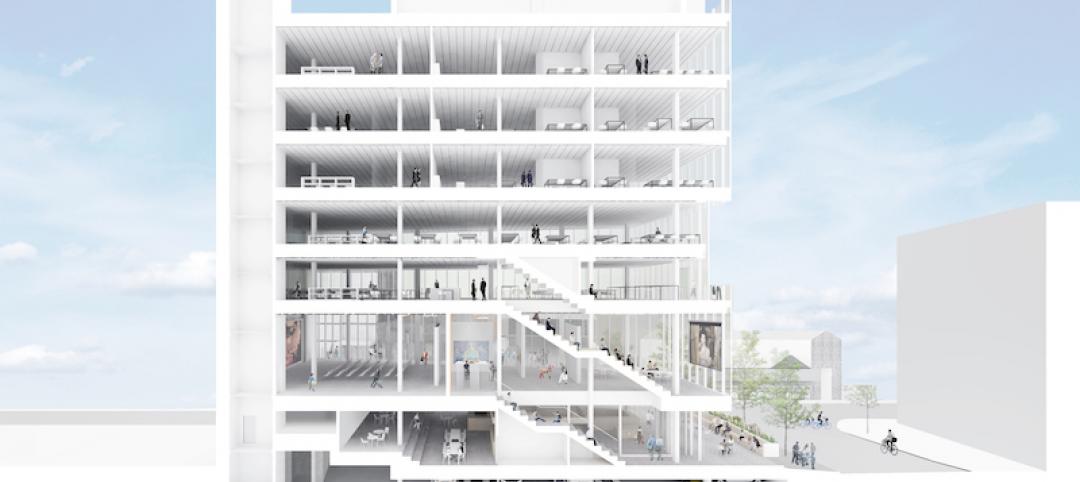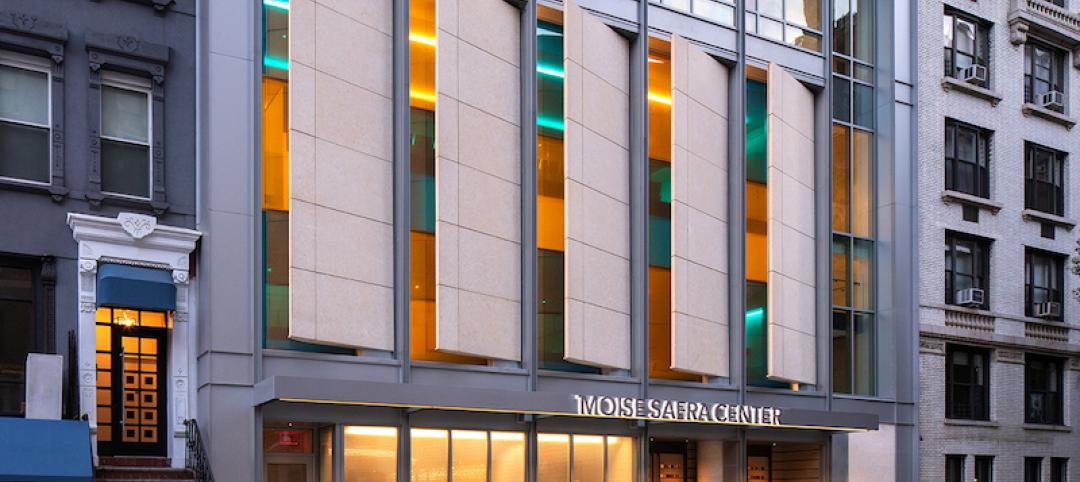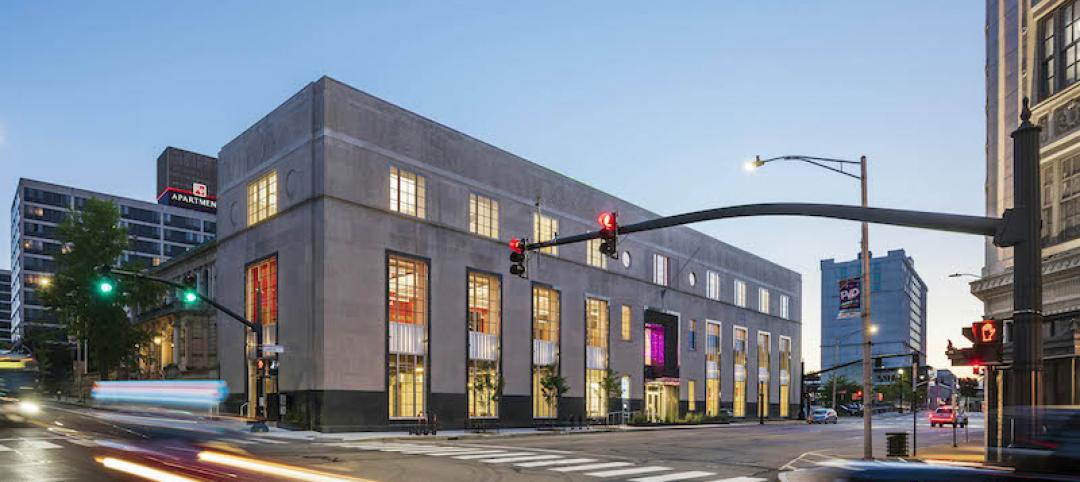 |
|
When rebuilding the observation tower, existing brick was taken down to a constant course, which allowed new brick to blend at the match line. |
For 38 years, the Pere Marquette Depot sat boarded up, broken down, and fire damaged. The Prairie-style building, with its distinctive orange iron-brick walls, was once the elegant Bay City, Mich., train station. The facility, which opened in 1904, served the Flint and Pere Marquette Railroad Company when the area was the epicenter of lumber processing for the shipbuilding and kit homebuilding industries.
In 1953, the 9,300-sf depot underwent an atomic-age modernization to convert it into a Greyhound bus terminal. Classical features like the 66-foot-high observation tower, wraparound canopy, ornamental metal brackets, and porte-cochere were demolished. After the bus station closed in 1969, the property sat vacant for more than three decades.
It took the depot's owner, Great Lakes Center Foundation, from 2002 to 2005 to patch together $3.85 million from local, state, and national sources to begin an extensive but frugal renovation that would bring the building back to life as a community center run by the local Convention and Visitor's Bureau and as offices for the Bay Area Community Foundation.
The Building Team, headed by Quinn Evans | Architects of Ann Arbor, Mich., with local firms Gregory Construction as GC and MacMillan Associates Inc. as engineer, had a mess on its hands. The masonry walls were in decent shape, but the foundation was undermined and the interior was devastated by toxic pigeon guano and fire and water damage, which destroyed most of the ornamental plaster walls and ceilings. The mechanical equipment, boiler, piping, plumbing fixtures, light fixtures, and most of the wiring had been stripped.
The Building Team salvaged the wainscoting and most of the windows and doors, replaced missing tiled canopies, the Spanish clay tile roof, and the observation tower, and repositioned the depot for use as a twenty-first-century community and office building. Although the project did not seek LEED certification, recycled content, low-VOC materials, low-flow plumbing fixtures, radiant heating, and light-sensor controls were used.
“They've done a wonderful job with both the interior and exterior work,” said Reconstruction Awards judge David Callan, SVP Environmental Systems Design, Chicago. Fellow judge Ken Osmun, group president of construction at Wight & Co., Darien, Ill., marveled at the project's bang for the buck. “The budget was so low and they had to make the depot the focal point of the community. I can't imagine the challenges they had to overcome.” —Jay W. Schneider, Senior Editor

Related Stories
Wood | May 14, 2021
What's next for mass timber design?
An architect who has worked on some of the nation's largest and most significant mass timber construction projects shares his thoughts on the latest design trends and innovations in mass timber.
Cultural Facilities | Apr 1, 2021
A Connecticut firm deploys design to assist underserved people and communities
Hartford, Conn.-based JCJ Architecture traces its roots to 1936, when the U.S. was just coming out of an economic depression and its unemployment rate was still 14%. In 2021, with the country trying to recover economically from the impact of the coronavirus, and with questions about social inequity entering the public debate as rarely before, JCJ has focused its design work on projects and clients that are committed to social responsibility and advocacy, particularly for underserved or marginalized communities.
Cultural Facilities | Mar 1, 2021
Moise Safra Center completes in New York City
The project will act as a second home for the Jewish community it serves.
Market Data | Feb 24, 2021
2021 won’t be a growth year for construction spending, says latest JLL forecast
Predicts second-half improvement toward normalization next year.
Giants 400 | Dec 16, 2020
Download a PDF of all 2020 Giants 400 Rankings
This 70-page PDF features AEC firm rankings across 51 building sectors, disciplines, and specialty services.
Giants 400 | Dec 3, 2020
2020 Cultural Facilities Giants: Top architecture, engineering, and construction firms in the U.S. cultural facilities sector
AECOM, Arup, and Populous head BD+C's rankings of the nation's largest cultural facilities sector architecture, engineering, and construction firms, as reported in the 2020 Giants 400 Report.
Government Buildings | Nov 13, 2020
Tax shortfalls nip government projects in the bud
Federal contracts are proceeding, but states and cities are delaying, deferring, and looking for private investment.
Cultural Facilities | Oct 13, 2020
Thailand’s Elephant Museum reinforces the bond between humans and beasts
The complex, in Surin Province, was built with 480,000 clay bricks.
Libraries | Sep 25, 2020
Major renovation to Providence’s downtown library is completed
The $29 million project adds light and collaborative space to a 67-year-old wing.
Cultural Facilities | Sep 24, 2020
America's 11 most endangered historic places - 2020 list
Annually, this list spotlights important examples of our nation’s architectural and cultural heritage that, without applied action and immediate advocacy, will be destroyed or face irreparable damage.
















